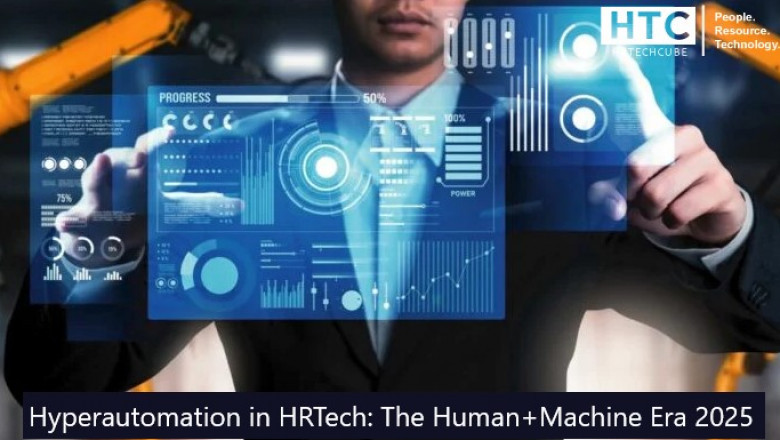views
In the rapidly evolving landscape of human resources, Hyperautomation in HRTech is emerging as a transformative force, ushering in the Human+Machine Era 2025. By integrating advanced technologies such as artificial intelligence (AI), machine learning (ML), and robotic process automation (RPA), hyperautomation is redefining HR operations, enhancing efficiency, and enabling strategic decision-making.
Table of Contents
- Introduction
- Understanding Hyperautomation in HRTech
- Key Applications of Hyperautomation in HR
- 3.1 Talent Acquisition and Recruitment
- 3.2 Employee Onboarding
- 3.3 Payroll and Benefits Administration
- 3.4 Performance Management
- 3.5 Employee Engagement and Retention
- Benefits of Hyperautomation in HR
- Challenges and Considerations
- The Future of HRTech: The Human+Machine Era 2025
- Conclusion
2. Understanding Hyperautomation in HRTech
Hyperautomation refers to the use of advanced technologies to automate complex business processes, going beyond traditional automation by incorporating AI, ML, and RPA. In the context of HRTech, hyperautomation aims to streamline and enhance various HR functions, from recruitment to employee engagement, by automating repetitive tasks and providing data-driven insights.
3. Key Applications of Hyperautomation in HR
3.1 Talent Acquisition and Recruitment
Hyperautomation transforms the recruitment process by automating candidate sourcing, screening, and selection. AI-powered tools can analyze resumes, match candidates to job descriptions, and even conduct initial assessments, reducing time-to-hire and improving the quality of hires.
3.2 Employee Onboarding
Automated onboarding platforms guide new hires through necessary documentation, training modules, and introductions to company culture, ensuring a seamless integration into the organization. This not only enhances the new employee experience but also reduces administrative burdens on HR teams.
3.3 Payroll and Benefits Administration
By automating payroll processing and benefits management, organizations can minimize errors, ensure compliance with regulations, and provide employees with timely and accurate compensation. This leads to increased trust and satisfaction among the workforce.
3.4 Performance Management
Hyperautomation enables continuous performance monitoring through real-time data collection and analysis. This allows for more objective evaluations, personalized feedback, and the identification of development opportunities, fostering a culture of continuous improvement.
3.5 Employee Engagement and Retention
Automated surveys, sentiment analysis, and AI-driven engagement platforms help HR professionals gauge employee satisfaction and address concerns proactively. By understanding and acting on employee needs, organizations can improve retention rates and build a more committed workforce.
4. Benefits of Hyperautomation in HR
- Increased Efficiency: Automating repetitive tasks frees up HR professionals to focus on strategic initiatives.
- Enhanced Accuracy: Reducing manual data entry minimizes errors in HR processes.
- Data-Driven Decision Making: Access to real-time analytics supports informed strategic planning.
- Improved Employee Experience: Streamlined processes lead to higher satisfaction and engagement.
5. Challenges and Considerations
While hyperautomation offers numerous advantages, organizations must address potential challenges such as data privacy concerns, the need for significant upfront investment, and the importance of maintaining a human touch in HR interactions. It's crucial to implement these technologies thoughtfully to ensure they complement rather than replace human judgment.
6. The Future of HRTech: The Human+Machine Era 2025
As we approach 2025, the integration of hyperautomation in HR is expected to deepen, leading to more personalized employee experiences, predictive analytics for workforce planning, and a greater emphasis on strategic HR functions. The Human+Machine Era signifies a collaborative approach where technology enhances human capabilities, resulting in a more agile and responsive HR function.
For More Info: https://hrtechcube.com/hyperautomation-in-hrtech/
Conclusion
Hyperautomation is set to revolutionize HRTech by automating complex processes, providing actionable insights, and enabling HR professionals to focus on strategic initiatives. By embracing this transformation, organizations can enhance efficiency, improve employee satisfaction, and stay competitive in the evolving business landscape.















Comments
0 comment